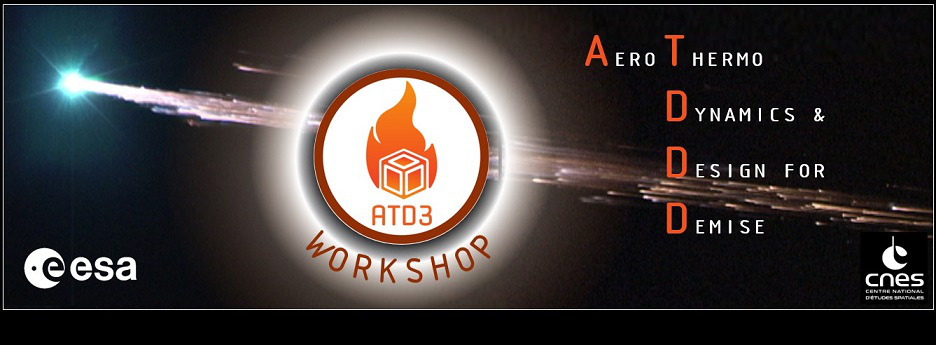Speaker
Description
Pressure Vessels have gained notoriety for being one of the most frequently identified spacecraft debris items recovered on ground following destructive entry events. As such, they constitute a key factor in determining the overall ground risk associated with a given uncontrolled entry event.
Due to their often straightforward physical features as uniformly blunt bodies, spherical pressure vessels in particular lend themselves well to an academic reduction of the re-entry problem, justifying a focus on material-specific heating interfaces and thermo-ablative response behaviours. This is highly convenient towards directly applying the findings of ground-based experiments conducted on the level of material samples to flight-relevant simulation scenarios. As such results can be compared directly with accordingly recovered debris items, mutual verification becomes straightforward between the three cornerstones of inquiry comprising ground testing, computational models, and data from actual destructive entry events.
A brief overview of the key parameters governing the thermo-ablative response behaviour, and by extension the overall demisability and ultimate ground risk associated with these objects is given, followed by a summary of recent findings from Plasma Wind Tunnel (PWT) experiments for materials used in many monolithic and composite-overwrapped pressure vessel designs. Special attention is given to those material parameters governing the heating interface of the object, namely the surface emissivity and its catalytic properties.
A modular definition for an empirical mass-specific heat of ablation is introduced, which can be extracted directly from the results of well-defined PWT material tests. The definition of this empirical heat of ablation can be adjusted based on a) the respective availability of complementary material data such as relevant emissivity datasets and thermophysical properties and b) the fidelity with which the coupled simulation tool represents the aerothermodynamic heating interface and internal heat transport, in any case retaining an optimum in accuracy. Combined with a material-specific temperature threshold, the thermo-ablative response behaviour of any material can thus conveniently be described by two metrics in an empirical and thus quantitatively meaningful fashion, independently from its qualitative nature.
This approach is coupled to a simple entry propagator model optimized for the simulation of thin-walled re-entering spherical bodies, accounting for varying ballistic coefficients and potential tumbling motions, in order to assess three distinct but relevant entry scenarios respectively for three pressure vessel design types defined primarily by their material composition. In the given example, the utilised definition of the effective heat of ablation specifically considers the effects of catalytic recombination and the pressure vessels' thermo-ablative response is evaluated accordingly in all three scenarios under consideration of non-equilibrium effects, demonstrating a use-case in which a fully formed catalysis model is available yet where internal heat transport phenomena are neglected.
A summary of according simulation results is presented and discussed under consideration of the available evidence of relevant recovered spacecraft debris.

